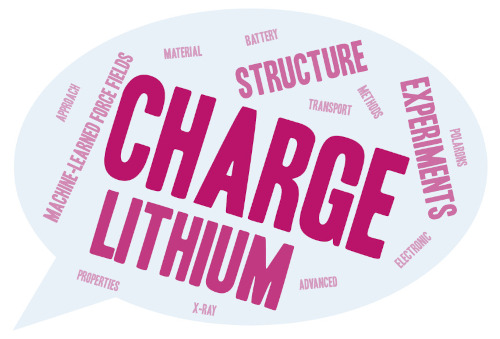Machine-Learned Force Fields for Lithium Manganese Oxide Cathode Materials

Machine-Learned Force Fields for Lithium Manganese Oxide Cathode Materials
Supervisors: Dr. Andrei Benediktovitch (DESY), Prof. Robert Meißner (hereon, TUHH), Dr. Gregor Vonbun-Feldbauer (TUHH)
Lithium manganese oxides (LMO) are promising cathode materials for lithium batteries. The transport properties crucial for battery performance are heavily dependent on the electronic structure and polarons, coupling the electronic structure with lattice distortions. While advanced X-ray scattering methods can, in principle, be used to investigate such properties, detailed knowledge of LMO is necessary to guide and analyze such experiments. Computational approaches can contribute significantly here. Traditionally, this requires sophisticated quantum mechanics calculations. However, accessible system sizes and time scales are limited using such methods. Thus, they often offer only an insufficient picture of the charging and discharging process. The development and training of a machine-learned force field (MLFF) for LMO has the potential to complete this picture. However, it requires a novel class of MLFFs that treat explicit charges in a way that accounts for long-range electrostatic interactions. Based on the charge equilibration (QEq) approach implemented in our ELECTRODE software package, we envisage incorporating charges into the MLFF. It is necessary to describe the short- and long-range order of extended polaronic structures in LMO. This study will support X-ray experiments to enable the tracking of lithium transport in LMO. Therefore, combining atomistic simulations with experiments would provide novel insights into this material and technological advancements.
Requirements:
- Master's degree (or equivalent) in physics, computer science (ideally with a natural science specialization), theoretical chemistry, or materials science.
- programming skills and languages: Python, Bash (Unix shell), and preferably C++ and CUDA
- experience in
- performing atomistic simulations (molecular dynamics or ab initio), preferably utilizing LAMMPS/VASP
- machine learning force fields (desirable)
- object-oriented programming and parallelization in C++ (highly beneficial)
- knowledge of thermodynamics, quantum mechanics, and their application to atomistic simulations, and a basic understanding of ML methods is helpful
-
basic knowledge of crystallography
Position:
- Helmholtz-Zentrum hereon
- 100% EGR. 13 (TV-AVH) position for three years
Hereon offers flexible working hours and work-life balance opportunities and promotes equal opportunities and diversity. In principle, the full time position (39 h/week) is also sharable.
Hereon promotes equal opportunities and diversity. The professional development of women is very important to us. Therefore, we strongly encourage women to apply for the vacant position.
Applications from severely disabled persons will be given preference if they are equally qualified.